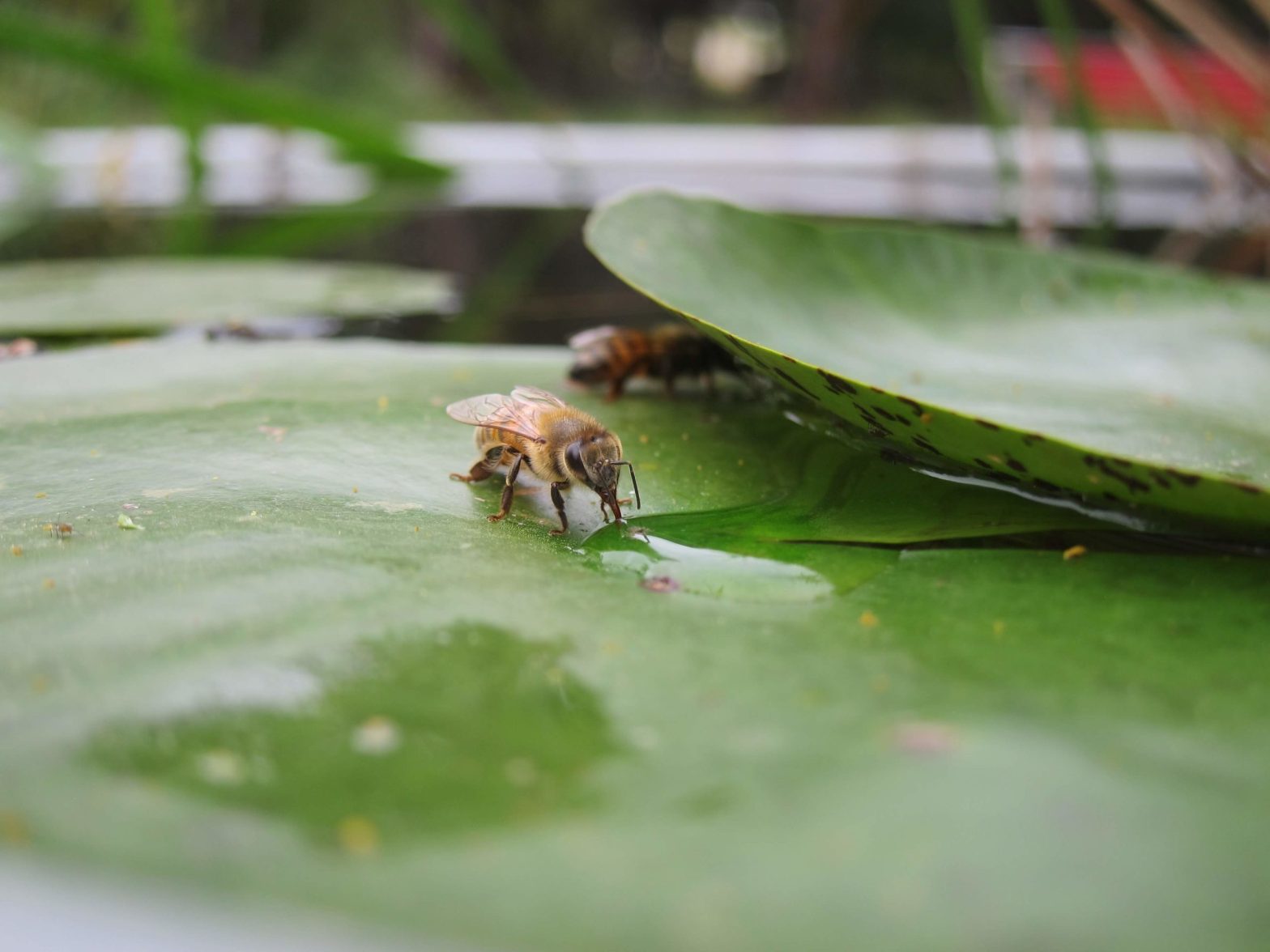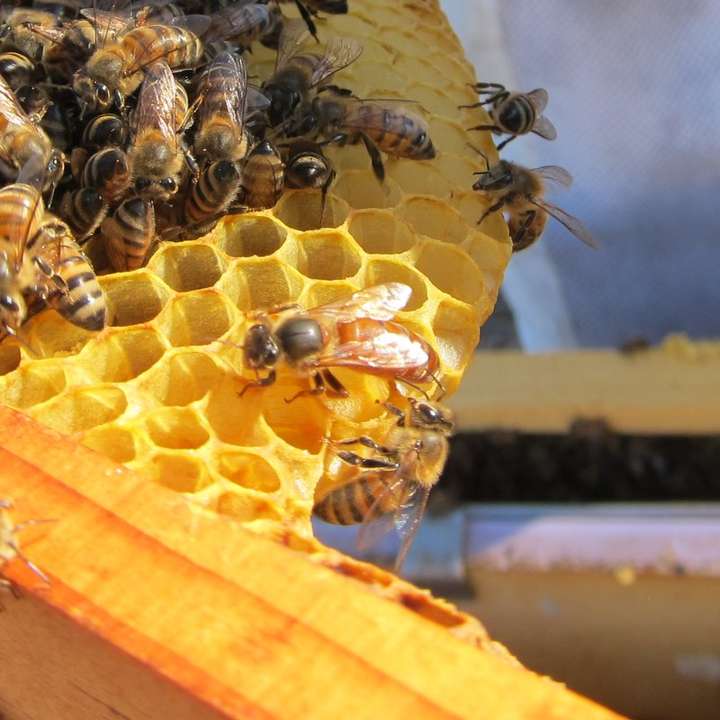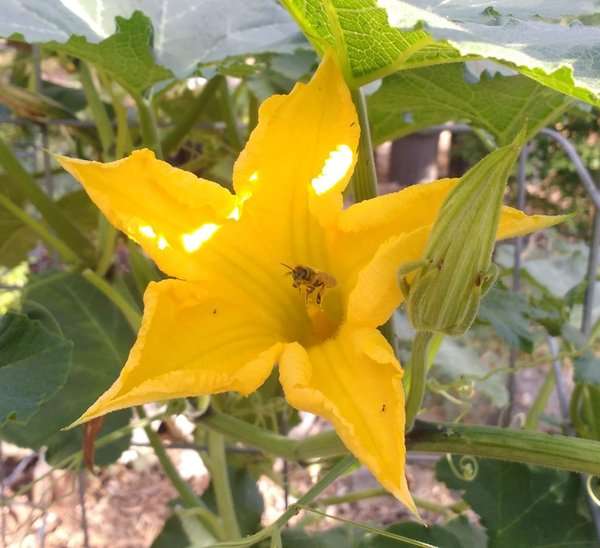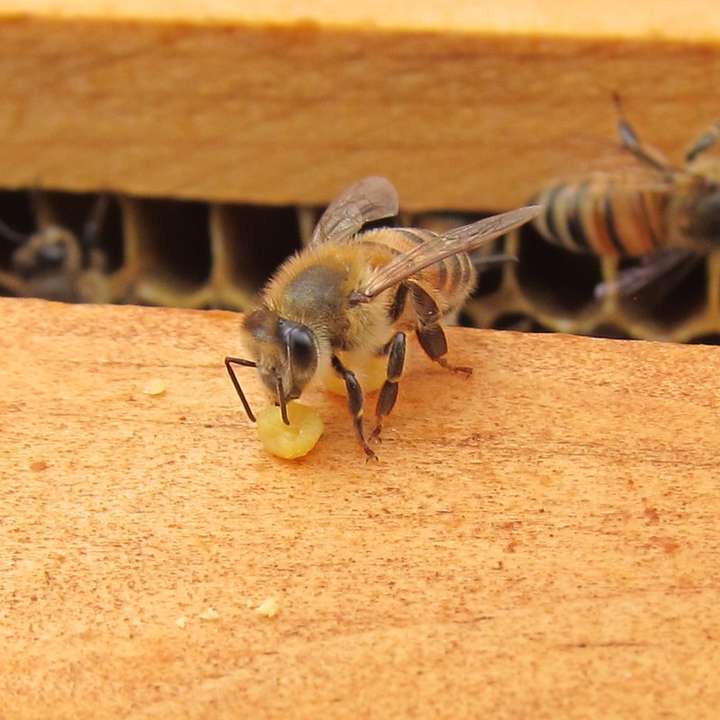Chemical-free Beekeeping

We have been successfully keeping bees without chemical treatments since the beginning of our apiary in 2014. Beekeepers often use chemicals (pesticides, antibiotics, acids, and/or oils) in their hives to ensure the survival of their colonies. Unfortunately, these treatments may lead to widespread pesticide resistance, antibiotic-resistant bacteria, and pesticide residues in apiary products⁽¹⁾.
At Dunsmore Honey, we have found that chemicals are not necessary for the survival of our colonies. Our bees continue to do well, living and reproducing year after year.
the main contamination danger for bee products originates in a lesser extent from the environment, than from the apicultural practice
Bogdanov et al. 2003
Using chemicals in beekeeping can increase the likelihood of contaminated honey. In-hive chemical treatments can leave residues in honey and wax⁽²⁾⁽³⁾⁽⁴⁾⁽⁵⁾⁽⁶⁾⁽⁷⁾. These chemicals pose hazards such as being corrosive, flammable, irritating to the skin, throat, and eyes, carcinogenic, mutagenic, and/or toxic to humans and the environment.
Undisclosed “other ingredients” (aka inert ingredients) may contaminate honey and wax as well. The name inert implies that these other ingredients are not active; however, they have been found to be biologically or chemically active and toxic⁽⁸⁾⁽⁹⁾⁽¹⁰⁾.
At Dunsmore Honey, we work with nature and avoid chemical treatments. Our bees are healthy and can produce cleaner and healthier honey for our family and yours to enjoy.
References
- Texas Apiary Inspection Service Integrated Pest Management for Honey Bee Health.
- ”High Levels of Miticides and Agrochemicals in North American Apiaries: Implications for Honey Bee Health” PLoS ONE 5(3): e9754.
- ”Varroacides and their residues in bee products” Apidologie, Springer Verlag,1999,30(2-3),pp.235-248.
- ”THE CONTAMINANTS OF THE BEE COLONY” Bulgarian Journal of Veterinary Medicine 6(2):59-70 · July 2003.
- ”Effect of contamination and adulteration of wax foundations on the brood development of honeybees” Apidologie (2020).
- “Study of Acaricide Stability in Honey. Characterization of Amitraz Degradation Products in Honey and Beeswax” J. Agric. Food Chem. 2001, 49, 12, 5835–5842.
- ”Best Management Practices for Hive Health A Guide for Beekeepers” The Honey Bee Health Coalition January 1, 2019.
- “PRN 97-6: Use of Term “Inert” in the Label Ingredients Statement” EPA
- “Unidentified Inert Ingredients in Pesticides: Implications for Human and Environmental Health” Environ Health Perspect. 2006 Dec; 114(12): 1803–1806.Published online 2006 Aug 18.
- “Inert or “Other” Ingredients Topics Fact Sheet” National Pesticide Information Center.



